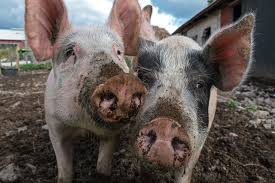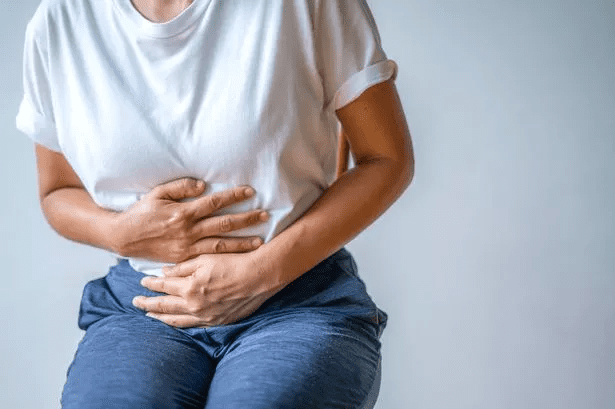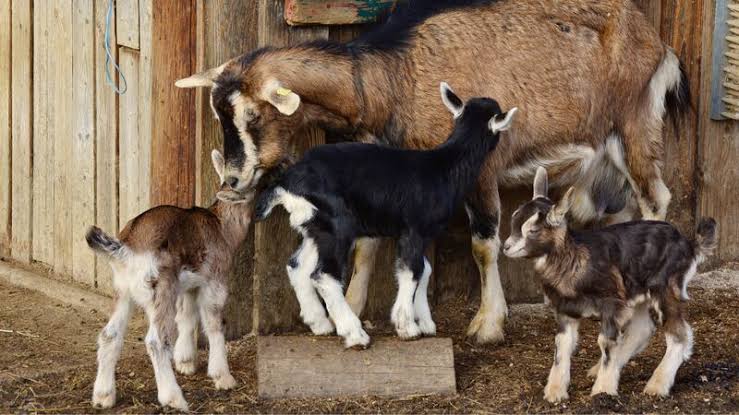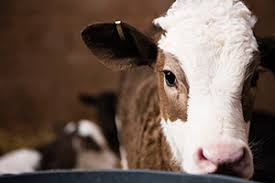Escherichia coli, commonly known as E. coli, is a type of bacteria that can cause infections in humans, these infections are usually linked to the ingestion of contaminated food or water. E. coli is part of the normal flora in the intestines of humans and animals, but certain strains can lead to illness.
Infections with E. coli can vary in severity, ranging from mild stomach discomfort to more serious conditions such as urinary tract infections and, in extreme cases, kidney failure. It’s important to understand that not all E. coli strains are harmful; some are even beneficial for digestion. However, the pathogenic strains can pose health risks.
Transmission of E. coli infections typically occurs through the consumption of undercooked or contaminated food, such as raw vegetables, undercooked ground beef, and unpasteurized milk. Additionally, contaminated water sources can contribute to the spread of these infections.
Symptoms of E. coli infections may include abdominal cramps, diarrhea (which may be bloody), nausea, and vomiting. In some cases, fever may also be present. It’s crucial to seek medical attention if symptoms persist or if there are signs of dehydration, as severe E. coli infections can lead to complications.
To prevent E. coli infections, practicing good hygiene is essential. This includes thorough handwashing before handling food, cooking meat thoroughly, avoiding the consumption of raw or unpasteurized products, and maintaining proper sanitation practices in food preparation areas.
Treatment for E. coli infections often involves supportive care, such as staying hydrated and managing symptoms. In severe cases, especially when complications arise, medical intervention with antibiotics may be necessary. However, it’s important to note that not all strains of E. coli respond to antibiotic treatment.
Public health measures, including food safety regulations and monitoring of water sources, play a critical role in preventing and controlling the spread of E. coli infections. Ongoing research aims to better understand the different strains of E. coli and develop more effective strategies for prevention and treatment.
However, E. coli infections are caused by specific strains of bacteria that can lead to various health issues. Understanding the sources of contamination and adopting preventive measures are key to minimizing the risks associated with these infections. Continued research and public awareness contribute to the overall effort to safeguard public health from the impact of E. coli.
Read Also: Breed Characteristics of Rabbit
Animals Affected by E. coli Infections

E. coli infections can impact a variety of animals, ranging from livestock to household pets. The bacteria, Escherichia coli, may cause illness in animals similar to the way it affects humans. While some strains are harmless and even beneficial in the normal gut flora, certain pathogenic strains can lead to infections.
In livestock, particularly cattle, E. coli infections are of concern. These infections can be transmitted through contaminated feed, water, or unsanitary living conditions. Calves are especially vulnerable, and infection can result in diarrhea, dehydration, and sometimes, more severe complications.
Pets, such as dogs and cats, can also be affected by E. coli infections. This can occur through the consumption of contaminated food, water, or exposure to infected feces. Symptoms in pets may include diarrhea, vomiting, lethargy, and loss of appetite. Prompt veterinary attention is crucial to manage the infection and prevent complications.
Wildlife can also be impacted by E. coli, especially in areas where human and animal interactions are frequent. Contaminated water sources and human waste can contribute to the transmission of the bacteria among wild animals, potentially leading to health issues and disruptions in ecosystems.
Efforts to prevent E. coli infections in animals involve maintaining good hygiene practices, providing clean and safe living environments, and ensuring the quality of food and water sources. Veterinarians play a vital role in diagnosing and treating infections in domesticated animals, while conservationists and researchers work to understand the impact of E. coli on wildlife.
By addressing the factors that contribute to E. coli infections in animals, it is possible to mitigate the risks and promote the well-being of both domesticated and wild species. Public awareness about proper waste disposal, responsible pet ownership, and sustainable agricultural practices also contributes to the overall prevention of E. coli infections in the animal kingdom.
Damages Caused by E. coli Infections

E. coli infections can result in various damages to both human health and, in some cases, the environment. The severity of these damages depends on the strain of E. coli involved and the individual’s health condition. Here are some common damages caused by E. coli infections:
1. Human Health Impacts:
Gastrointestinal Issues: The most common damage caused by E. coli infections is gastroenteritis, which includes symptoms such as abdominal cramps, diarrhea (sometimes bloody), nausea, vomiting, and fever. These symptoms can lead to dehydration, particularly in vulnerable populations like young children and the elderly.
Hemolytic Uremic Syndrome (HUS): In severe cases, certain strains of E. coli can lead to HUS, a condition characterized by kidney failure, low platelet count, and anemia. HUS is more common in children and can have long-term health consequences.
2. Economic Impact:
Healthcare Costs: Treating severe E. coli infections can result in substantial healthcare expenses due to hospitalization, medications, and potential long-term care for complications.
Product Recalls: Contaminated food products linked to E. coli outbreaks may lead to extensive recalls, causing financial losses for food producers and distributors.
3. Environmental Impact:
Contaminated Water Sources: E. coli infections can be linked to water contamination, affecting aquatic ecosystems and potentially posing risks to wildlife.
Agricultural Runoff: Agricultural practices that contribute to E. coli contamination in water sources can harm soil quality and aquatic environments.
4. Psychological Impact:
Fear and Anxiety: Publicized outbreaks of E. coli infections can create fear and anxiety within communities, affecting consumer confidence in food safety.
5. Long-term Health Consequences:
Chronic Health Issues: Some individuals may experience lingering health issues even after recovering from acute E. coli infections, particularly if complications such as kidney damage occurred.
Addressing the damages caused by E. coli infections involves a multifaceted approach, including improved food safety measures, stringent water quality regulations, and public education on hygiene practices. Ongoing research aims to develop better diagnostic tools, treatment options, and preventive strategies to minimize the impact of E. coli on both human health and the environment.
Read Also: Selecting and Improving Desirable Rabbit Traits
Control and Preventive Measures

Controlling and preventing E. coli infections involves a combination of measures to ensure food safety, maintain hygiene, and minimize environmental contamination. Here are key control and preventive measures:
1. Food Safety Practices:
Proper Cooking: Thoroughly cook meat, especially ground beef, to eliminate E. coli bacteria. Use a food thermometer to ensure internal temperatures reach recommended levels.
Avoid Raw or Unpasteurized Products: Refrain from consuming raw or undercooked foods, such as eggs, unpasteurized milk, and raw seafood, as they may harbor E. coli.
Safe Food Handling: Practice good hygiene when handling and preparing food. Wash hands thoroughly, sanitize surfaces, and separate raw meat from other foods to prevent cross-contamination.
2. Safe Water Practices:
Water Treatment: Ensure that water from public sources is properly treated and monitored to eliminate potential E. coli contamination.
Avoiding Contaminated Water: Consume water from reliable sources and avoid drinking untreated water from lakes, rivers, or wells in areas with known contamination risks.
3. Hygiene and Personal Care:
Handwashing: Regularly wash hands with soap and water, especially before handling food, after using the restroom, and after contact with animals.
Personal Hygiene: Encourage good personal hygiene practices to prevent the spread of E. coli, particularly in childcare settings and healthcare facilities.
4. Public Health Measures:
Surveillance and Monitoring: Implement surveillance systems to monitor and identify outbreaks promptly. This allows for timely intervention and control measures.
Education and Awareness: Promote public awareness campaigns to educate individuals about the risks of E. coli infections and the importance of proper food handling and hygiene practices.
5. Livestock and Agricultural Practices:
Animal Husbandry: Implement good practices in animal husbandry, including proper sanitation in farms and avoiding overcrowding, to reduce the risk of E. coli transmission among livestock.
Manure Management: Implement effective manure management strategies to prevent contamination of water sources and crops with E. coli.
6. Medical Intervention and Treatment:
Prompt Medical Attention: Seek medical attention if symptoms of E. coli infection, such as diarrhea with blood or severe abdominal cramps, occur. Early diagnosis and treatment can prevent complications.
7. Research and Innovation:
Vaccine Development: Ongoing research aims to develop vaccines targeting specific strains of E. coli, providing an additional preventive measure.
By integrating these measures into public health policies, agricultural practices, and individual behaviors, it is possible to control and prevent the spread of E. coli infections, safeguarding both human health and the environment.
Frequently Asked Questions (FAQs) About E. coli Infections
Q1: What is E. coli, and how does it cause infections?
A: Escherichia coli, or E. coli, is a type of bacteria found in the intestines of humans and animals. While many strains are harmless, certain pathogenic strains can cause infections when ingested through contaminated food or water.
Q2: What are the symptoms of an E. coli infection?
A: Symptoms may include abdominal cramps, diarrhea (possibly bloody), nausea, vomiting, and fever. In severe cases, complications like kidney failure may occur.
Q3: How is E. coli transmitted?
A: E. coli infections are often transmitted through the consumption of contaminated food or water. Person-to-person transmission and contact with infected animals are also possible.
Q4: Which foods are commonly associated with E. coli contamination?
A: Raw or undercooked ground beef, raw vegetables, unpasteurized milk, and raw eggs are commonly associated with E. coli contamination. Contaminated water sources can also contribute to infections.
Q5: How can E. coli infections be prevented?
A: Preventive measures include thorough cooking of meat, avoiding raw or unpasteurized products, practicing good hygiene, and ensuring the safety of water sources.
Q6: Is there a vaccine for E. coli infections?
A: Currently, there is no widely available vaccine for E. coli infections. Research is ongoing to develop vaccines targeting specific strains.
Q7: What complications can arise from E. coli infections?
A: Severe E. coli infections can lead to complications such as hemolytic uremic syndrome (HUS), which involves kidney failure, low platelet count, and anemia.
Q8: How are E. coli infections diagnosed and treated?
A: Diagnosis involves laboratory tests on stool samples. Treatment often includes supportive care, such as staying hydrated, and in severe cases, antibiotics may be prescribed.
Q9: Can animals be affected by E. coli infections?
A: Yes, E. coli infections can impact animals, including livestock and household pets. Contaminated food, water, or exposure to infected feces can lead to illness in animals.
Q10: What measures can be taken to prevent E. coli contamination in agriculture?
A: Implementing good hygiene in animal husbandry, managing manure effectively, and ensuring water sources are not contaminated are key measures to prevent E. coli contamination in agriculture.

